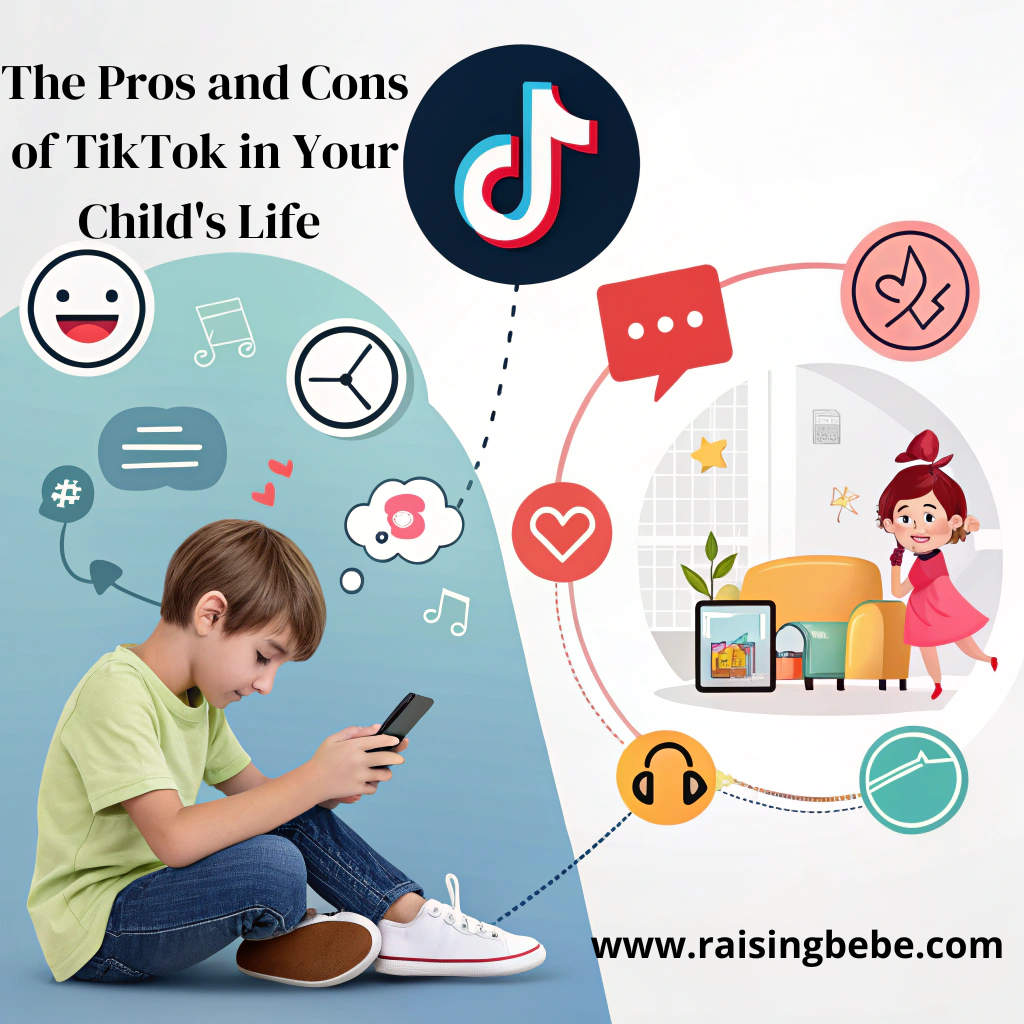In today’s digital age, social media platforms have become an integral part of daily life, and TikTok stands out as one of the most popular among them. With its ability to create viral trends and provide endless entertainment, TikTok has captivated audiences of all ages, including children. However, as parents, the decision to allow TikTok in your child’s life raises important questions. While the app offers opportunities for creativity, learning, and connection, it also comes with potential risks. This article explores the pros and cons of TikTok in your child’s life, helping you make an informed choice about its role in their digital world.
1. The Benefits of TikTok in Your Child’s Life
Creativity and Self-Expression
TikTok provides children with a platform to express themselves creatively. With its wide range of filters, music options, and editing tools, kids can create content that reflects their personality and interests. Many children have used TikTok as a creative outlet, whether through dance, comedy skits, or educational content. This can help foster confidence and encourage artistic development.
Learning Opportunities
TikTok isn’t just about entertainment; it can also be educational. Many creators share valuable knowledge on topics such as science, history, languages, and even mental health awareness. Some parents have even praised TikTok for its ability to engage children in learning outside of traditional school settings, offering new ways to absorb information in a fun and accessible format.
Social Connection
For children, social media often serves as a tool for connection. TikTok allows them to interact with their friends and other like-minded users worldwide, making it easier to build relationships and engage with trends that resonate with them. In some cases, it can create a sense of belonging and community.

2. The Risks of TikTok in Your Child’s Life
Exposure to Inappropriate Content
One of the most significant concerns with TikTok is the risk of children encountering inappropriate or harmful content. While TikTok has made efforts to implement age restrictions and content moderation, the nature of the platform still allows for explicit videos or harmful challenges to slip through. Parents must be vigilant in monitoring their child’s activity to ensure they are not exposed to content that could negatively influence them.
Addiction and Screen Time
The addictive nature of TikTok is another concern. The endless scrolling and algorithm-driven content can lead children to spend excessive amounts of time on the app, reducing the time they spend on other activities like outdoor play, schoolwork, or spending quality time with family. This could contribute to poor sleep habits, decreased physical activity, and other negative health effects tied to excessive screen time.
Cyberbullying and Negative Peer Pressure
As with any social media platform, TikTok comes with the risk of cyberbullying. Children may face negative comments or online harassment, and some might even fall victim to harmful trends or challenges. The desire for validation through likes and comments can sometimes lead to peer pressure or an unhealthy focus on social approval, which can affect their mental well-being.
3. How to Navigate TikTok in Your Child’s Life Safely?
Setting Boundaries and Time Limits
To avoid excessive screen time, set clear boundaries. Limit how much time your child spends on TikTok each day. Encourage them to take breaks and participate in other activities, like outdoor play or family time.
Monitoring and Communication
Stay involved in your child’s TikTok use. Regularly check in on what they are watching and create an open dialogue about their experiences. This will help you address any issues early. Also, make sure their account is set to private and monitor their interactions.
Educating About Online Safety
Teach your child about online safety. Remind them not to share personal information and to be cautious when interacting with strangers. Help them understand how to use TikTok responsibly and protect themselves from online risks.
Conclusion
TikTok in your child’s life can be both a source of fun and creativity, as well as a potential risk for harmful content and unhealthy habits. As a parent, it’s essential to weigh the pros and cons, monitor your child’s usage, and set boundaries that ensure their safety. By taking an active role in their digital lives, you can help them enjoy the positive aspects of TikTok while minimizing the negative impacts.

